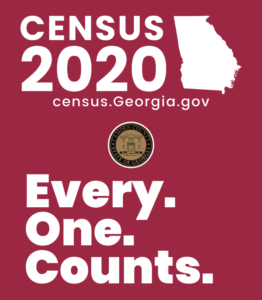 Beginning in March, households across the country will receive official Census Bureau mail and be asked to participate 2020 U.S. Census. The census determines over $1 trillion in federal spending each year for programs that help give the most vulnerable children a strong start in life by providing access to the quality early education resources, healthcare, food assistance, and housing support.
Beginning in March, households across the country will receive official Census Bureau mail and be asked to participate 2020 U.S. Census. The census determines over $1 trillion in federal spending each year for programs that help give the most vulnerable children a strong start in life by providing access to the quality early education resources, healthcare, food assistance, and housing support.
Despite the importance of the census for young children, the number of them left uncounted is large and growing: in 2010, an estimated one in 10 children under age five were missed—that’s more than two million uncounted children, the largest undercount in any age bracket. If trends continue, even more young children will be missed in 2020.
While persistent under counts plague many communities, the issue is particularly pronounced among young children, as they are more likely to live in households that are already hard-to-count. Adults caring for children under five are more likely to be young, low income, live in multi-family homes, and move frequently between rental units – all of which increase their chances of being missed.
Confusion and concern about the privacy of census information also make it difficult to count young children. Nearly 40 percent of children under five live in complex households. They may split time between homes, be cared for by foster parents, grandparents, or other relatives, or their caregivers may be housing-insecure, living with friends or relatives on a temporary basis. All of this creates confusion about how to answer the census questionnaire—an issue that’s magnified if the child lives in a linguistically isolated household.
Here’s what families need to know:
- Every kid that lives with you counts on the 2020 Census. That means your family and anyone else living with you most of the time. Be sure to count all the kids living in your home, even if they’re not related to you or are only living with you temporarily. If you’re unsure who counts, just include everyone who is living in your home on April 1, 2020.
- Counting children helps determine how billions of dollars get spent each year on things like hospitals, schools, and other neighborhood services.
- The 2020 Census is fast, easy, and totally private. For the first time, you can fill out the census online, over the phone, or by mail. It only takes 10 minutes and you can complete it anytime. It’s safe, totally private, and the results cannot be shared with anyone else.
Important dates:
- March 12 – 20: Households will begin receiving official Census Bureau mail with detailed information on how to respond to the 2020 Census online, by phone, or by mail.
- March 30 – April 1: The Census Bureau will count people who are experiencing homelessness over these three days. As part of this process, the Census Bureau counts people in shelters, at soup kitchens and mobile food vans, on the streets, and at non-sheltered, outdoor locations such as tent encampments.
- April 1: Census Day is observed nationwide. By this date, every home will receive an invitation to participate in the 2020 Census. Once the invitation arrives, you should respond for your home in one of three ways: online, by phone, or by mail. When you respond to the census, you’ll tell the Census Bureau where you live as of April 1, 2020.
The results of the 2020 Census will inform decisions about allocating hundreds of billions of dollars in federal funding to communities across the country—for hospitals, fire departments, school lunch programs, and other critical programs and services.
For more information, visit 2020Census.gov.
